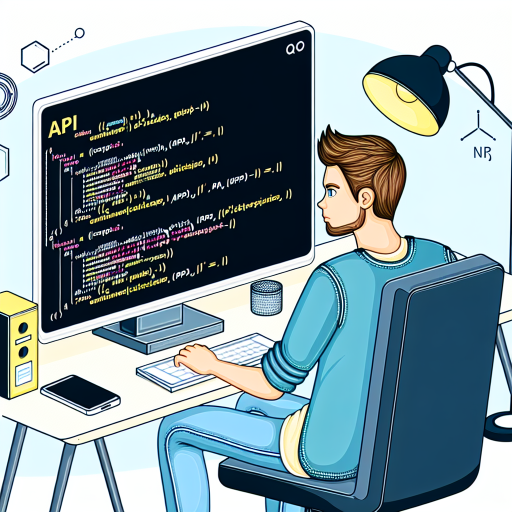Introduction
Staying updated with mobile app development trends is crucial in today’s fast-paced tech world.
Developers face constant changes in user expectations and technological advancements.
Keeping a pulse on emerging trends helps developers create competitive, innovative apps that meet market demands.
The year 2024 presents unique opportunities for developers as new technologies and user behaviors evolve.
Mobile app usage continues to surge across various industries, creating endless possibilities.
Embracing new trends allows developers to enhance user experiences and maximize app performance.
This blog post will discuss five essential mobile app development trends to watch and master in 2024.
These trends focus on artificial intelligence, cross-platform development, the Internet of Things, augmented reality, and blockchain technology.
Artificial intelligence (AI) integration will significantly impact user interaction and personalization.
AI algorithms can learn user preferences and automate tasks, making apps smarter.
As developers embrace AI, they will create more engaging and efficient applications.
Cross-platform development will gain more traction, allowing developers to build apps that work on multiple platforms seamlessly.
Using frameworks like Flutter and React Native, developers can reach a wider audience without compromising quality or performance.
This adaptability will become crucial as consumer preferences diversify.
The Internet of Things (IoT) will also shape mobile app development.
Tech Consulting Tailored to Your Coding Journey
Get expert guidance in coding with a personalized consultation. Receive unique, actionable insights delivered in 1-3 business days.
Get StartedMore devices connect to the internet, creating opportunities for mobile apps to control smart devices.
Developers will need to focus on creating apps that provide seamless connectivity and an intuitive user experience.
Augmented reality (AR) is set to revolutionize how users interact with apps.
Gamification and immersive experiences will enhance user engagement.
Developers must harness AR technology to create unique experiences that captivate users.
Finally, blockchain technology offers transparency and security, appealing to users’ growing concerns about data privacy.
Developers will need to incorporate blockchain solutions into mobile apps to build trust and enhance security.
Trend 1: Rise of Artificial Intelligence and Machine Learning
Artificial Intelligence (AI) and Machine Learning (ML) revolutionize mobile app development.
These technologies enhance user experiences and optimize app functionalities.
Developers increasingly integrate AI and ML to meet user demands and expectations.
Overview of AI and ML in Mobile App Development
AI refers to systems that can perform tasks typically requiring human intelligence.
These tasks include problem-solving, learning, and perception.
Machine Learning, a subset of AI, involves teaching algorithms to learn from data.
This learning capability enables mobile applications to analyze user behavior and adapt accordingly.
Build Your Vision, Perfectly Tailored
Get a custom-built website or application that matches your vision and needs. Stand out from the crowd with a solution designed just for you—professional, scalable, and seamless.
Get StartedThe integration of AI and ML in mobile apps creates significant advantages:
- Automation: Automating mundane tasks saves time and effort.
- Personalization: Tailoring experiences based on user preferences increases engagement.
- Predictive Analytics: Understanding user behavior enables proactive feature enhancements.
Real-world Applications
Developers utilize AI and ML for various real-world applications, leading to improved user experiences:
- Personalized User Experiences: Apps analyze user data to provide customized content. For instance, Netflix recommends shows based on viewing history. This personalization keeps users engaged and satisfied.
- Predictive Analytics: Apps can forecast user needs through data analysis. E-commerce platforms can suggest products based on previous purchases. This upselling technique drives sales and enhances customer satisfaction.
- Chatbots and Customer Support: AI-powered chatbots offer instant assistance. Users receive immediate responses to inquiries. This feature boosts user experience by providing seamless support, which is vital for retention.
- Voice Assistants: Apps with voice recognition capabilities improve usability. Voice-activated features simplify tasks. Examples include Google Assistant and Siri, which offer hands-free engagement.
- Image and Object Recognition: Applications utilize AI for image processing and recognition. For example, Google Lens identifies objects and provides relevant information. This capability enhances interactive features.
Tools and Frameworks for Integrating AI and ML
To successfully incorporate AI and ML into mobile apps, developers can leverage various tools and frameworks:
- TensorFlow: An open-source library for deep learning. It enables developers to build complex models for image and text analysis. TensorFlow provides robust support for mobile platforms.
- Core ML: Apple’s machine learning framework. This tool facilitates the integration of machine learning models into iOS apps. Core ML optimizes models for on-device performance while ensuring user privacy.
- Firebase ML: Google’s mobile developer platform. Firebase ML offers easy access to machine learning capabilities, such as cloud-based models. Developers can implement visual recognition and natural language processing effortlessly.
- PyTorch: A flexible and dynamic deep learning framework. It supports rapid prototyping and experimentation, making it ideal for mobile AI applications. PyTorch now offers mobile deployment options for ease of use.
- Microsoft Azure ML: A cloud-based platform providing machine learning services. Azure ML simplifies the development of predictive models and enables seamless integration into mobile applications. Developers can utilize various algorithms and tools.
Importance of Mastering AI and ML Technologies
As the demand for AI and ML in mobile applications grows, developers must master these technologies.
The future potential is immense, as businesses strive for innovative and efficient solutions.
Companies that leverage AI and ML effectively enjoy competitive advantages in the marketplace.
Mastering AI and ML is crucial for several reasons:
- Enhances App Functionality: Developers can create intelligent apps that respond to user needs dynamically.
- Improves Decision Making: Predictive analytics enables informed decisions based on user behavior and trends. Businesses can better understand their audience and adjust strategies accordingly.
- Differentiates Products: As competition grows, differentiation becomes vital. AI and ML provide unique features that attract users, enhancing brand reputation.
- Drives Innovation: Continuous learning from data opens new avenues for app development. Innovations in AI and ML lead to novel features and solutions for user challenges.
- Prepares for Future Trends: Staying ahead of emerging trends ensures long-term sustainability. AI and ML will profoundly influence future technologies and applications.
The rise of AI and ML in mobile app development is noteworthy.
These technologies transform how developers approach user experiences and app functionalities.
As mobile technology continues to evolve, understanding and mastering AI and ML will be essential for developers looking to stay competitive in the industry.
5G Integration
As technology evolves, 5G stands out as a transformative force for mobile app development.
This fifth generation of wireless technology revolutionizes how users interact with their devices.
Understanding 5G will be essential for developers looking to stay competitive.
What is 5G Technology?
5G technology offers a significant enhancement over previous mobile network generations.
Optimize Your Profile, Get Noticed
Make your resume and LinkedIn stand out to employers with a profile that highlights your technical skills and project experience. Elevate your career with a polished and professional presence.
Get NoticedIt operates on a much higher frequency, providing faster data rates and more reliable network performance.
- Speed: 5G can achieve data speeds up to 100 Gbps.
- Lower Latency: It reduces latency to as low as 1 millisecond.
- Connectivity: 5G supports up to 1 million devices per square kilometer.
- Improved Capacity: It enhances network capacity, accommodating more users without compromising performance.
The implications of 5G for mobile apps are profound.
Reliable connectivity and speed open up new possibilities for developers.
As a result, apps can provide richer experiences that were previously unattainable.
Benefits of 5G for Mobile Applications
The integration of 5G into mobile applications offers numerous benefits:
- Faster Data Transfer: Users can download large files or stream high-definition content seamlessly.
- Enhanced User Experience: Apps can provide real-time feedback and interactivity.
- IoT Growth: 5G enhances the Internet of Things, connecting numerous devices effortlessly.
- Greater Reliability: Users experience fewer dropped connections and interruptions.
These benefits will raise user expectations.
Developers must adapt to deliver rapid and responsive applications that leverage the power of 5G.
Applications Thriving with 5G Capabilities
Several types of applications will particularly benefit from 5G integration.
Here are some noteworthy examples:
- Augmented Reality (AR) and Virtual Reality (VR): 5G allows users to interact with immersive environments without lag.
- Cloud Gaming: Users can enjoy high-quality gaming experiences streamed in real-time, without local processing constraints.
- Smart City Applications: Real-time data processing enables improved traffic management and public safety.
- Remote Healthcare: 5G facilitates telemedicine solutions, allowing instant data transfer and patient monitoring.
As 5G becomes more widespread, the potential for innovative applications will expand.
Developers need to consider how their products can harness this technology effectively.
The Need for Developers to Adapt
Developers must shift their approaches in order to embrace 5G technology.
To thrive in this new landscape, they need to adopt several key practices:
- Utilize Edge Computing: Offload processing to the edge of the network to enhance performance.
- Optimize App Performance: Ensure that applications run efficiently to utilize 5G benefits fully.
- Focus on Security: As connectivity grows, ensuring data security becomes paramount.
- Collaborate Across Disciplines: Partner with network engineers and UX designers to create holistic solutions.
By making these adjustments, developers can create next-generation applications that capitalize on 5G’s strengths.
Understanding 5G integration will be crucial for mobile apps’ future success.
Importance of Embracing 5G for Future Success
5G technology represents a significant leap forward in mobile connectivity.
Developers must familiarize themselves with its benefits and implications.
Embracing 5G allows developers to offer faster, more reliable applications that enhance user experiences.
As we advance towards 2024, adapting to 5G is non-negotiable.
The demand for innovative, high-performance applications will only grow.
Understanding how to integrate 5G into mobile app development will position developers to succeed in an increasingly competitive landscape.
Explore Further: No Coding Experience? No Problem! How to Build Your First Mobile App from Scratch
The Internet of Things (IoT) and Mobile Development
The Internet of Things (IoT) has transformed the mobile landscape in profound ways.
It connects everyday devices to the internet, allowing them to send and receive data.
This interconnectivity enhances user experiences and optimizes operations across various sectors.
Definition and Significance of IoT in the Mobile Landscape
IoT refers to a network of interconnected devices that communicate through the internet.
These devices consist of sensors, software, and other technologies embedded in physical objects.
This interconnectedness allows mobile applications to control and monitor these devices seamlessly.
The significance of IoT in mobile development is multi-faceted:
- Enhanced User Experience: Mobile apps can provide real-time information, improving the way users interact with devices.
- Increased Efficiency: IoT-driven apps can automate tasks and processes, saving users time and effort.
- Data-Driven Insights: IoT devices collect valuable data, enabling developers to create apps that offer personalized experiences.
- Interconnectivity: IoT fosters collaboration between various apps, increasing their functionality and reach.
Use Cases for IoT Functionality
The applications of IoT in the mobile landscape are vast.
Here are some key use cases:
Smart Home Apps
Smart home applications allow users to control home devices remotely.
Some common functionalities include:
- Lighting Control: Users can turn lights on and off or adjust brightness levels from their mobile devices.
- Thermostat Management: Apps enable temperature adjustments to enhance comfort and save energy.
- Security Monitoring: Users can monitor security cameras, locks, and alarms through their smartphones.
- Appliance Control: Mobile apps can manage smart appliances, like refrigerators and washing machines.
Health Monitoring
Healthcare has seen a significant transformation due to IoT.
Mobile health monitoring applications include:
- Wearable Devices: Devices like fitness trackers and smartwatches monitor health metrics such as steps taken and heart rate.
- Remote Patient Monitoring: Healthcare providers can track patients’ health conditions through connected devices.
- Medication Management: Apps remind patients when to take medications and can alert caregivers if doses are missed.
- Telemedicine: IoT enables remote consultations, allowing patients to connect with healthcare professionals via mobile apps.
Industrial Applications
Industries are leveraging IoT for greater efficiency and productivity.
Key applications include:
- Supply Chain Management: IoT technology helps track products throughout the supply chain in real-time.
- Predictive Maintenance: Sensors monitor machinery performance, allowing for proactive maintenance to reduce downtime.
- Energy Management: Industrial IoT applications monitor energy consumption and optimize resource usage.
- Quality Control: IoT devices can detect anomalies in production processes, ensuring higher quality standards.
Overview of Tools and Platforms for IoT Integration in Mobile Development
Integrating IoT functionality into mobile applications requires specific tools and platforms.
Here are some essential ones:
Software Development Kits (SDKs)
SDKs provide developers with the necessary tools to create IoT applications.
Popular SDKs include:
- AWS IoT SDK: Amazon’s IoT SDK offers a robust framework for building IoT applications on the cloud.
- Google Cloud IoT: Google provides APIs and SDKs to connect IoT devices to its cloud platform.
- Azure IoT SDK: Microsoft’s SDK assists in creating applications that utilize Azure’s IoT services.
Application Programming Interfaces (APIs)
APIs are crucial for enabling communication between IoT devices and mobile applications.
Noteworthy APIs include:
- MQTT: A lightweight messaging protocol that is ideal for low-bandwidth devices.
- REST APIs: These APIs allow mobile apps to communicate with cloud services and IoT devices effectively.
- WebSocket: An API that enables real-time data transfer between applications and devices.
Development Platforms
Development platforms simplify the process of building IoT applications.
Some popular platforms include:
- Ionic: Allows for creating cross-platform mobile apps with IoT functionality.
- React Native: A popular framework for building mobile applications that can integrate IoT features.
- Node-RED: A flow-based development tool for wiring together IoT devices, APIs, and online services.
Skills Required for Creating Robust IoT-Compatible Apps
Developers need specific skills to create effective IoT-compatible applications.
Essential skills include:
- Data Management: Understanding how to handle and analyze data from various IoT devices is crucial.
- Security Knowledge: Protecting IoT applications from security threats requires expertise in cybersecurity.
- Networking: A solid foundation in networking concepts is necessary for integrating various devices.
- Programming Languages: Familiarity with languages like Java, C#, and Python is essential for efficient app development.
- Cloud Computing: Knowledge of cloud platforms and services enhances app scalability and functionality.
As we move deeper into 2024, mastering IoT functionality within mobile app development will be key.
Developers who embrace this trend will find themselves at the forefront of technological innovation.
The future of mobile applications will rely heavily on leveraging the vast possibilities offered by IoT.
This will create smarter, more connected experiences for users.
Find Out More: A 2-Week Crash Course on Android App Development for New Developers
Understanding Cross-Platform Development Frameworks
Cross-platform development frameworks have transformed how developers approach mobile app creation.
These frameworks, such as Flutter and React Native, allow developers to write code once and deploy it on multiple platforms.
This capability leads to substantial time savings and simplified maintenance.
As a result, businesses can reach broader audiences without doubling their development efforts.
What Are Cross-Platform Frameworks?
Cross-platform frameworks enable developers to build applications compatible with both iOS and Android.
This means one codebase supports both operating systems.
The ability to share significant portions of code brings efficiency.
Developers can focus more on improving user experience rather than parallel coding for different platforms.
- Flutter: Developed by Google, Flutter uses the Dart language. It emphasizes performance and provides a rich set of pre-built widgets.
- React Native: Managed by Facebook, React Native uses JavaScript. It facilitates a smooth user experience by providing native-like performance.
- Xamarin: A Microsoft product, Xamarin allows C# developers to create apps. It focuses on native UI performance across platforms.
- Ionic: Ionic combines web technologies, like HTML, CSS, and JavaScript. It’s suitable for those with a web development background.
Advantages of Cross-Platform Development Frameworks
Embracing cross-platform development brings several advantages that are hard to ignore.
Here are some of the key benefits:
- Reduced Development Time: Developers need to write code once, significantly speeding up the development process. This efficiency allows teams to launch products more quickly.
- Increased Reach: By deploying apps on both iOS and Android, businesses can engage a wider audience. This broader reach can enhance market penetration and user acquisition.
- Cost-Effectiveness: Maintaining one codebase is cheaper than managing separate ones. Reduced project expenses make cross-platform frameworks especially appealing for startups and small businesses.
- Consistent User Experience: These frameworks include numerous UI components. By maintaining a consistent look and feel across platforms, they ensure users have a familiar experience.
Comparing Different Cross-Platform Frameworks
While many cross-platform frameworks exist, each has its specific use cases and advantages.
Understanding these differences is crucial for developers and businesses.
Here’s a comparison of some notable frameworks:
- Flutter: Best suited for projects requiring a highly customized UI. It allows developers to create beautiful animations and transitions. Developers often use Flutter for MVPs (minimum viable products) where time-to-market is critical.
- React Native: Ideal for projects that require speed and efficiency. It’s particularly strong for applications that require frequent updates. Teams familiar with web technologies can transition into mobile development with ease.
- Xamarin: This framework is best for enterprise applications that demand a native look. C# skills are beneficial, making it a strong option for businesses already invested in the Microsoft ecosystem.
- Ionic: Shows its strength in developing hybrid apps that leverage web technologies. It’s practical for companies with previous web applications looking to expand into mobile.
Importance of Cross-Platform Development in 2024
Mastering cross-platform development will be critical for several reasons in 2024.
- Growing Popularity: As user expectations evolve, businesses will continue to seek efficient solutions. The demand for cross-platform applications will surge, making skilled developers invaluable.
- Emerging Technologies: Technologies like augmented reality (AR) and the Internet of Things (IoT) will require adaptable app solutions. Cross-platform capabilities will provide the necessary flexibility for innovative applications.
- Increased Competition: The mobile app landscape will only become more competitive. Businesses must deliver quality apps quickly, and cross-platform frameworks streamline this process.
- Talent Shortage: There is already a shortage of skilled developers in the mobile industry. Focusing on cross-platform development equips developers with in-demand skills, making them more competitive in the job market.
Moreover, mastering these frameworks enhances one’s ability to respond to changing market dynamics.
Businesses need to adapt quickly to technological advancements and user preferences.
Developers who can create cross-platform solutions will be at the forefront of this evolution.
Future Directions for Cross-Platform Development
The rise of cross-platform development frameworks is reshaping the mobile app development landscape.
Frameworks like Flutter and React Native will continue to dominate.
Their ability to reduce development time while expanding market reach presents unbeatable advantages.
As we move into 2024, mastering these frameworks will become increasingly vital.
Developers skilled in cross-platform frameworks will have the tools to innovate and meet business demands.
This growing trend is not just a passing phase; it’s a fundamental shift in mobile app development.
Embrace this trend today, and position yourself or your business for success in the future.
Understanding and adapting to cross-platform frameworks marks a significant step toward delivering high-quality, efficient mobile applications that can thrive in an ever-changing market.
Gain More Insights: Master Mobile App Development: A Step-by-Step Approach

The landscape of mobile app development is shifting dramatically.
As technology evolves, the focus on app security and user privacy intensifies.
Developers must now prioritize these elements to ensure the safety and trustworthiness of their applications.
Growing concerns about data breaches, identity theft, and privacy violations drive this urgent need for enhanced security measures.
Overview of Growing Concerns Related to Data Privacy and App Security
Users today are increasingly aware of their data’s value and the risks associated with mobile applications.
They have witnessed several high-profile data breaches and security failures that compromised their personal information.
Consequently, users demand transparency and control over their data, leading to heightened concern for privacy and security.
Hackers continually devise new techniques to exploit vulnerabilities.
They often target mobile applications where security flaws can lead to significant data breaches.
This reality places a burden on developers to offer secure and reliable apps that foster trust.
Additionally, the rise of IoT devices further complicates security efforts.
As these devices integrate with mobile apps, the attack surface expands, making robust security measures a necessity.
Key Regulations and Standards Influencing App Development
Regulatory frameworks play a critical role in shaping mobile app security.
Governments worldwide are establishing laws to protect user data and prevent unauthorized access.
Two significant regulations influencing app development include:
- GDPR (General Data Protection Regulation): This European regulation mandates strict protocols for handling user data.
- CCPA (California Consumer Privacy Act): This law enhances privacy rights for California residents.
These regulations can significantly impact how developers approach app security.
They must ensure compliance with legal requirements while maintaining a positive user experience.
Failure to adhere to these standards can result in severe legal consequences, financial penalties, and reputational damage.
Techniques for Enhancing App Security
Developers can implement several techniques to bolster app security.
These strategies minimize vulnerabilities and protect user data from malicious attacks.
Consider adopting these best practices:
- Encryption: Use encryption techniques to safeguard sensitive data both during transmission and storage.
- Secure Coding Practices: Follow secure coding guidelines to minimize vulnerabilities within the app.
- Two-Factor Authentication (2FA): Implement 2FA to enhance user account security.
- Regular Security Testing: Conduct periodic security assessments and penetration testing.
- Obfuscation: Use code obfuscation techniques to protect the app’s source code from reverse engineering.
By employing these techniques, developers can create more secure applications that protect user data more effectively.
This proactive approach not only enhances security but also promotes user trust and confidence in the app.
The Importance of Adopting a Security-First Approach
Adopting a security-first approach during the development lifecycle is crucial.
Integrating security measures from the start can save time and resources in the long run.
Here are several reasons why a security-first mindset is essential:
- Early Detection of Vulnerabilities: Identifying security issues early minimizes potential risks.
- Cost-Effectiveness: Addressing security concerns during initial phases lowers overall costs.
- Improved User Trust: Users are more likely to trust apps that prioritize their security.
- Enhanced Reputation: Companies that prioritize security tend to enjoy a positive reputation.
- Regulatory Compliance: Integrating security across the development lifecycle ensures compliance.
Encouraging a culture of security awareness among the development team also plays a vital role.
Training developers on security best practices equips them to address potential threats effectively.
Regular updates and discussions on security trends can help keep the team informed and prepared.
Focus on App Security and Privacy in 2024
The focus on app security and privacy is not merely a trend but a necessity in mobile app development.
As concerns about data breaches grow, developers must prioritize security to safeguard user information.
Compliance with laws like GDPR and CCPA influences development strategies, urging developers to adopt a proactive stance.
By implementing strong security measures, adopting a security-first approach, and adhering to regulations, developers can build trust with users.
This not only enhances the app’s success but also protects users’ sensitive information.
As we move forward into 2024, prioritizing app security will be a defining characteristic of effective mobile app development.
Future Predictions for the Mobile App Landscape
The mobile app landscape is evolving rapidly.
Each year brings new innovations and trends that shape development.
As we look beyond 2024, several predictions stand out.
These predictions provide insight into where the industry is headed.
Increased Focus on AI and Machine Learning
Artificial Intelligence (AI) and Machine Learning (ML) will advance significantly.
Mobile apps will provide hyper-personalized experiences using vast amounts of data.
Developers will integrate AI-driven features, including chatbots, predictive analytics, and recommendation engines.
These integrations will become crucial for enhancing user engagement and retention.
Expansion of Augmented and Virtual Reality
Augmented Reality (AR) and Virtual Reality (VR) will transform mobile apps.
Users will expect immersive experiences in gaming, education, and retail.
This trend will create new opportunities for developers.
Mastering AR and VR technologies will be essential for staying competitive.
Rise of 5G Technology
The rollout of 5G networks will revolutionize app performance.
Developers will exploit faster data speeds and lower latency.
Apps that use real-time data, streaming, and cloud computing will flourish.
The demand for seamless experiences will drive the development of innovative applications.
Emphasis on Privacy and Data Security
As concerns over privacy grow, user data protection will remain paramount.
Regulatory frameworks will enforce securities, demanding stricter compliance.
Developers will need to create apps that prioritize data protection.
Embracing privacy by design will become a standard requirement.
This commitment will build trust and foster user loyalty.
Increasing Use of No-Code and Low-Code Platforms
No-code and low-code platforms will democratize app development.
Non-technical users will create apps without extensive programming knowledge.
This trend promotes rapid prototyping and agility.
Developers must understand these platforms to collaborate effectively with business stakeholders.
Skills Development to Stay Ahead
To thrive in this evolving landscape, developers must continuously enhance their skills.
As technology changes, the demand for adaptable knowledge increases.
Here are the essential skills developers need to master:
Continuous Learning
The tech industry is always changing.
Developers should adopt a mindset of continuous learning.
They can take courses, read articles, and engage with online communities.
Learning should never stop, as new technologies and frameworks will always emerge.
Attending Workshops and Conferences
Participating in workshops and industry conferences offers significant advantages.
Developers can network with peers and experts.
They can discover the latest trends and best practices.
Attending events keeps developers informed about market needs and opportunities.
Mastering Emerging Technologies
Developers must stay updated on emerging technologies.
Knowledge of AI, AR, and VR will become increasingly crucial.
Understanding blockchain can also add value in sectors like finance and healthcare.
Keeping skills aligned with industry needs is paramount for success.
Building Soft Skills
Technical skills are vital, but soft skills matter too.
Developers should enhance their communication and teamwork abilities.
Problem-solving skills will become essential when tackling complex projects.
Cultivating emotional intelligence will improve collaboration within teams.
Recommended Resources and Courses
Upskilling is crucial in the mobile app development world.
Below are some recommended resources and courses that developers should consider:
Online Learning Platforms
- Coursera: Offers numerous courses on AI, AR, and app development.
- Udemy: Features a range of affordable courses on various technical subjects.
- edX: Partners with universities for high-quality educational content.
Coding Bootcamps
- General Assembly: Offers immersive programs focused on in-demand tech skills.
- Flatiron School: Specializes in software engineering and data science.
- Le Wagon: Provides practical coding education for aspiring mobile developers.
Community Forums and Networks
- Stack Overflow: A crucial platform for developer questions and community support.
- GitHub: Allows developers to collaborate, share code, and learn from others.
- Reddit: Various subreddits foster discussions on programming and app development.
Encouragement to Innovate and Experiment
As mobile app development trends evolve, innovation is essential.
Developers should embrace experimentation with new technologies.
Testing new ideas can lead to breakthroughs and unique applications.
Fostering creativity will set developers apart from the competition.
Encouragement to think outside the box will drive the industry forward.
Embracing a culture of experimentation will yield tangible results.
The future of mobile app development is exciting and full of potential.
By honing their skills, developers can lead the charge into this bright future.
Implications of Mobile App Development Trends in 2024
As we look ahead to 2024, mobile app development will witness significant transformative trends.
First, enhanced integration of artificial intelligence will shape user experiences.
Developers can leverage AI to create smarter, more responsive applications.
This will streamline operations and foster user engagement.
Second, the rise of 5G technology will revolutionize connectivity.
With faster speeds, apps will deliver rich multimedia content seamlessly.
Developers must design apps optimized for high-speed networks to enhance performance.
Third, the trend towards low-code and no-code platforms is dramatically changing development landscapes.
These solutions empower non-developers to create applications easily.
This democratization of app development can help businesses pivot quickly to meet user demands.
Fourth, a strong focus on app security is essential for user trust.
Cybersecurity threats continue to rise, making robust security measures imperative.
Developers should prioritize security features, ensuring users feel safe while using their apps.
Lastly, adopting augmented reality (AR) will redefine how users interact with applications.
AR can enhance gaming, shopping, and learning experiences.
Developers must explore innovative ways to integrate AR effectively into their apps.
Staying informed of these trends will prove invaluable.
Adaptability will become a critical success factor in a fast-paced technology sector.
Embracing new technologies ensures developers remain competitive and relevant.
We encourage all readers to start exploring these trends actively.
Implementing them into your projects now can yield significant advantages.
Equip yourself with the latest tools and methodologies to advance your development skills.
The future of mobile app development is bright, and your journey is just beginning!
Additional Resources
Letter from the Provost: K-State 2025 university initiatives
Software Developers, Quality Assurance Analysts, and Testers …




